- The divide in EV politics has its roots in the climate change divide.
- Polls show that Republicans are less likely to buy EVs when compared to Democrats.
- Misinformation continues to push consumers away from EVs.
- EV sales continue to grow around the globe, even in the United States.
The politicization of electric vehicles has created a problem similar to that of Dr. Seuss’s “Green Eggs and Ham.”
In the classic children’s book, a man keeps saying to Sam-I Am that he would not eat green eggs and ham. After a plethora of poking and prodding, he reluctantly tries them. And in the end, he likes them. Those who are against EVs might want to consider getting behind the wheel of an EV. They might like them, too.
ADVERTISEMENT
When someone tells me that they would never own an EV, the first thing I ask is if they’ve ever driven one. They always say no. Then, it’s my turn to talk about how much fun they are to drive.
The majority of EV drivers have already driven gas-powered cars. Yet, they’ve chosen EVs — often for a variety of reasons. But it’s safe to say they wouldn’t drive an EV if they didn’t enjoy it.
Unfortunately, politics in the EV space have created a divide that might be too deep to cross. Hopefully, a bridge will arrive so everyone can enjoy the technology, speed, and environmental benefits of electric vehicles.
The Political Evolution of Electric Vehicles: From Ridicule to Divisiveness
Electric vehicles have been political for years. When the Toyota Prius first arrived in dealership lots, people made fun of the small, eco-friendly car and the people who bought them. In 2007, Newsweek declared that Prius drivers weren’t trying to be green; they were trying to show off that they were green. But, the Prius has continued to deliver a fuel-efficient ride with a significantly smaller greenhouse gas footprint than most cars. Whether people are showing off or not, using less gasoline is good for the environment.
Today’s EV politics aren’t just about showing off vs. being green. The politics are divided and often vicious. Electric transportation is everywhere, and it doesn’t seem to be slowing. School buses, bicycles, Amazon vans, and personal vehicles are quickly becoming fully electric. Despite the impending ubiquity, there is a large group of people who continue to be dead-set against any vehicle with a battery.
ADVERTISEMENT
The Red and Blue Divide
According to a recent Gallup poll, Americans who identify as Republic are less likely to buy an EV. The numbers are staggering — as Gallup found that 71% of Republicans would not even consider one. On the flip side, 17% of Democrats would not consider buying one.
Despite the political polarization in the EV space and party divide, over 1 million people purchased an EV in 2023, and many of them live in “red states.” For example, in Wyoming — a decidedly red state — 71% of EV owners identify as Republicans. In Florida, 36% of EV owners identify as Republicans, while 39% identify as Democrats and the rest as Independent voters.
Most EV ownership is concentrated along the coastal states, but more people are purchasing them in the “flyover” states. Sales figures have reached a tipping point, showing that EVs are here to stay.
ADVERTISEMENT
Opposing Voices With Different Messages
With the country in the midst of the 2024 presidential election, EV politics will most likely get more heated. One candidate is pushing for more EVs and EV infrastructure, while the other is pushing back.
President Biden’s signature legislation is the Inflation Reduction Act, which has a core focus on selling more EVs and adding more supporting infrastructure. On the other hand, Donald Trump continues to share falsehoods about electric vehicles, encouraging supporters not to purchase them. For example, the former president once said that electric vehicles can only “drive for 15 minutes before you have to get a charge.”
False statements about EV range like this continue to create deeply divided EV politics. Trump also frequently talks about how Biden’s mandate is from the EPA, which is false. According to the New York Times, the EPA does not have the power to mandate EV sales. However, the EPA can propose legislation that would limit pollution generated by a manufacturer’s lineup.
Environmental Justice and Equity in EV Adoption
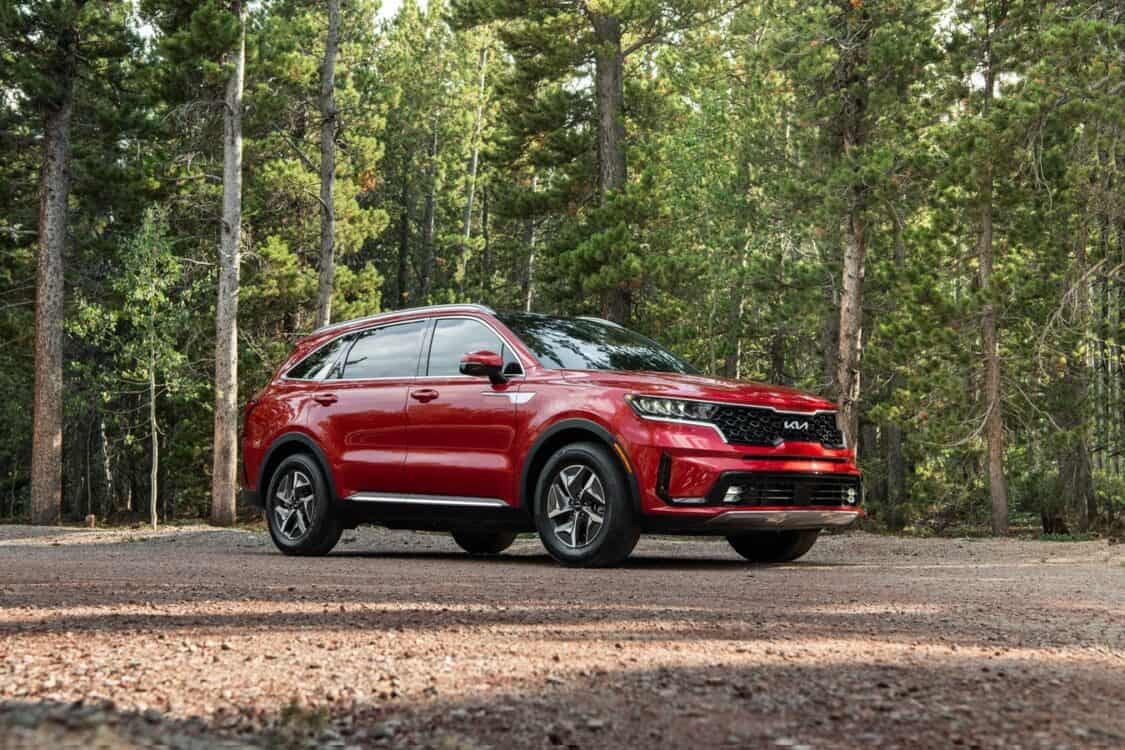
Unfortunately, the political divide affects the one thing we should all care about: the planet. Naysayers claim the false promise of electric cars involves whether or not they actually help the environment, but there is no denying that emissions from combustion engines harm the atmosphere.
ADVERTISEMENT
The Dangers of Doing Nothing
According to a 2021 report by the International Energy Agency, nations can keep the global temperature from increasing by 1.5 degrees Celsius by stopping the sales of gas-powered cars. Once the global temperatures exceed that point, catastrophic weather conditions will wreak havoc on the planet. We’re already seeing weather-related issues as the planet’s global temperature has warmed on average by about 1.1 degrees.
Political Differences Regarding Climate Change
Sadly, caring about the planet is also a political issue. According to a 2023 poll from the Pew Research Center, 90% of Democrats and Democratic-leaning independents want the U.S. to prioritize alternative energy sources. Only 42% of Republicans feel the same way, and those numbers are divided by age, as 67% of Republicans under 30 want to develop alternative energy, and 75% of Republicans over 65 want to increase production of fossil fuels.
The same Pew poll found that 78% of Democrats think climate change is a major threat to the country’s safety, while only 23% of Republicans feel the same way. U.S. Democrats echo numbers felt in European countries, as 81% of French citizens and 73% of Germans have similar worries about climate change and national well-being.
With so much difference between Democrats and Republicans regarding climate change, it’s easy to see why the divide exists about electric vehicles. The Gallup poll about EVs found that those who worry most about climate change are the most likely to own an EV or purchase one in the future. Of the 5% of Americans who own EVs, 79% of them are concerned about climate change. The same Gallup poll found that 77% of people who aren’t concerned about the environment aren’t likely to buy an EV.
Electric Vehicles and Charging Emissions
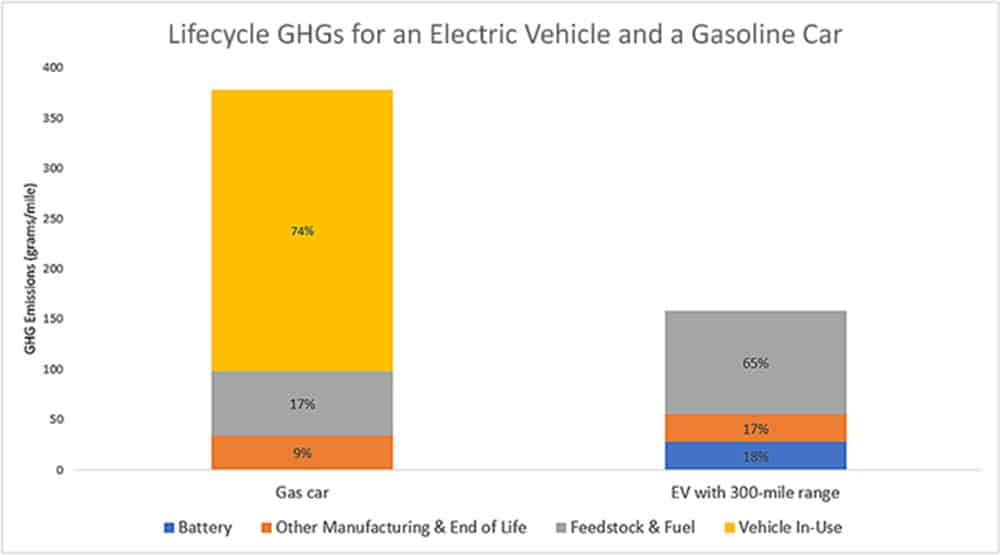
EVs aren’t the only tool to curb climate change, but they have proven to work. Sergey Paltsev, Deputy Director of the MIT Joint Program on the Science and Policy of Global Change said, “No, that’s not the case. But electric cars are actually much, much better in terms of the impact on the climate in comparison to internal combustion vehicles. And in time, that comparative advantage of electric cars is going to grow.”
Electric vehicles do not have carbon emissions coming from their tailpipes. Instead, carbon pollution comes from the energy source for charging. According to MIT, the best-case scenario for EVs is in Norway, where most of the energy comes from clean hydropower. In the U.S., most power still comes from burning dirty coal. Electric vehicles could become cleaner if more communities in the U.S. used renewable energy sources.
ADVERTISEMENT
However, EVs that charge on coal-powered electricity still generate less pollution than ICE vehicles generate from burning fossil fuels.
Another argument against electric cars involves battery production. Yes, battery production is a costly endeavor and does environmental damage, but researchers are busy looking for cleaner alternatives. Battery production alone should not deter drivers from moving to electric vehicles, as the lack of tailpipe emissions eventually zeroes out all greenhouse gas emissions created in manufacturing.
MIT compared lifetime emissions from driving 90,000 miles in an EV and 180,000 miles in a gas-powered car. They found driving an EV for half as long as a gas-powered car still resulted in at least 15% less emissions — even including all carbon-intensive manufacturing practices.
The facts are the facts, but political differences have pushed people away from accepting facts from the experts. Instead, EV naysayers have ideas about EVs that are simply not true. While EVs aren’t perfect, the actual problems with electric cars aren’t as bad as the naysayers claim they are.
Media Framing and EV Politics Discourse

Because of the way that the media frames EVs, electric vehicles are bringing out the worst in us. The other day I pulled up to charge my EV at a nearby public charger, and another EV driver was walking out to his new Mercede-Benz EQE. I started gushing over the beautiful sedan. He encouraged me to take a peek inside, which was just as gorgeous as the outside. Then he thanked me for my positivity because he said he gets so many mean comments from people who hate EVs.
ADVERTISEMENT
When political leaders and media talking heads complain about electric vehicles, their audiences listen. Then the audience responds, and all too often, they look and sound ignorant. I encourage our readers to take a look at the comments that appear on Electrify News’ social media posts. Nearly all comments are negative and involve misinformation about electric vehicles.
Why do people hate electric cars? Probably because someone told them to hate them. How do EV drivers know this? Because the naysayers use the same talking points as the politicians who complain about EVs. The complaints are often about charging time, charging needs, and battery issues. And the complaints are logically incorrect.
Government Policies and the EV Market
Any time the government gets involved in people’s lives, the people get angry. However, the role of the government is simple: to create and enforce rules for defense, foreign affairs, the economy, and public services.
Public Services Helping the Citizenry
Thanks to scientific evidence that tailpipe emissions are damaging the planet, the government is tasked with solving the problem as a public service. The EV mandate around the country isn’t designed to make life worse; it’s intended to improve air quality and protect the planet for future generations. We should care about the future and the humans who will want to live on a planet with clean air, normal weather patterns, and drinkable water.
According to a January 2024 Fact Sheet from the White House, “Since the President took office, EV sales have more than quadrupled, with more than four and a half million EVs on the road. EV ownership is more affordable than ever before, with prices down over 20% from one year ago. The number of publicly available charging ports has also grown by over 70%, with 170,000 publicly available EV chargers across the country, putting us on track to deploy 500,000 chargers by 2026 — achieving the President’s goal four years early.”
Those who support electric vehicles will see this announcement as good news, while those opposed might become enraged. They see the push to electrified transportation as an infringement on their freedom to drive a car with a tailpipe. Meanwhile, those who drive EVs see black smoke coming from massive pickup trucks as an infringement on their right to breathe clean air.
ADVERTISEMENT
Growing the Economy and Adding Jobs
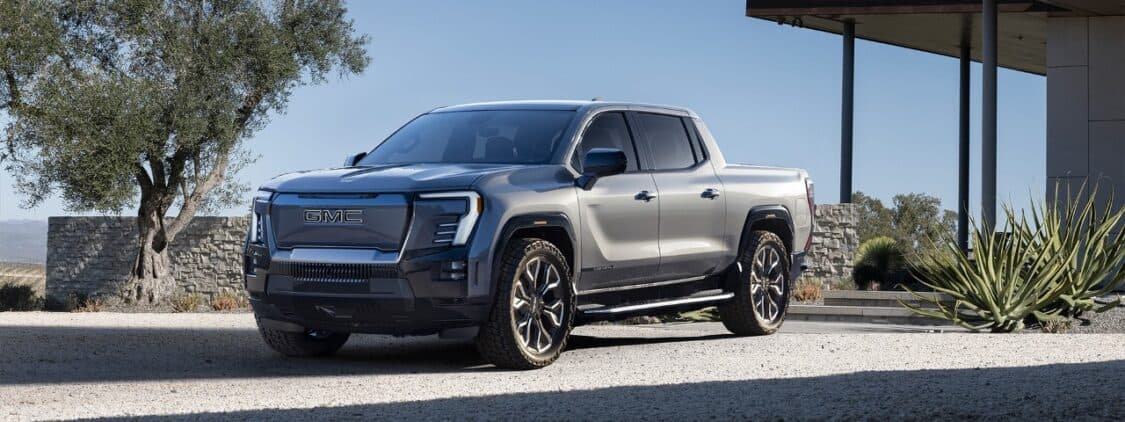
The federal government has incentivized private companies to invest more than $10 billion in EV charging. The same January 2024 Fact Sheet shared, “Just three years ago, there was almost no U.S.-based production of fast chargers, but since President Biden took office, at least 40 U.S.-based EV charger factories have been announced or opened. These facilities now have the capacity to produce more than a million chargers each year — including 60,000 fast chargers.” If the problem with electric cars is the lack of charging stations, the problem is slowly disappearing, as charging stations are popping up all over the country.
EV drivers greatly appreciate the growing infrastructure, as more charging stations make EV ownership easier. But it also can enrage those who see issues with electric cars and the government’s role in EV adoption. But without the government helping private industry and EV drivers, the problems with ICE vehicles would continue to pollute the planet. The government must step in to make a change when that change is needed.
Federal Mandates Built Roads and Bridges
Consider what the U.S. would be like if President Eisenhower refused to sign the Federal Aid Highway Act, which was inspired by his experiences seeing how easy it was for Germans to use their autobahns. Consider what the U.S. would be like if President Roosevelt did not sign the New Deal, which included over 650,000 miles of roads and 75,000 bridges.
Incentives Go Both Ways
The federal government isn’t forcing anyone to sell their gas-powered cars. Instead, it’s taking steps to make early adoption easier. Rather than getting angry that the U.S. is subsidizing electric vehicles with financial incentives, people should take a step back to realize that the U.S. also subsidizes gas-powered cars.
According to Reuters, the fossil fuel industry has tax incentives between $10 billion to $50 billion annually. Those incentives are covered by our tax dollars, and the Big Oil incentives are going to companies that rake in billions in profit.
ADVERTISEMENT
Global Approaches to EV Policies
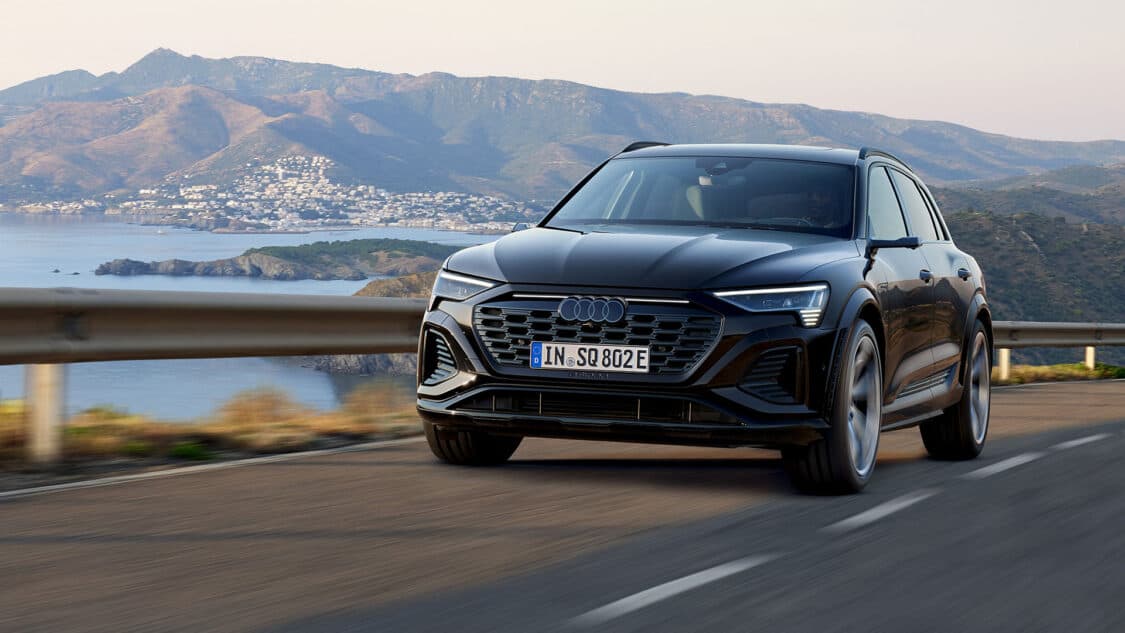
Knowing that Eisenhower (a Republican from Kansas) pushed for better national highways after experiencing the autobahns in Germany might make the global approaches to EV policies easier to accept. European and Asian countries are having more success than the U.S. when it comes to EV adoption and overall more welcoming EV politics.
Europeans Embracing EVs

Across the European Union, nearly all countries saw an increase in EV sales from 2022 to 2023. The countries embracing EVs the most include Norway, Sweden, Iceland, Germany, and France. The countries that have the lowest amount of EV sales include Cyprus, Poland, Czechia, and Slovakia. In 2023, 82% of new car sales in Norway were of battery-electric vehicles.
It’s fascinating to think about the popularity of EVs in Norway, especially considering the weather. EV batteries lose range in temperatures below freezing, but that’s not stopping the Norwegians. The country is phasing out ICE vehicles by 2025, and it has more public fast chargers per capita than any other country. The Scandinavian nation has also delivered plenty of incentives to early adopters, and the citizens have embraced them.
The top EVs in Norway include familiar names like the Tesla Model Y, VW ID.4, Mustang Mach-E, and Hyundai Kona Electric.
Around the E.U., governments have offered consumer incentives like being able to drive in bus lanes, preferential parking, and toll road exemptions. European countries have purchased electric municipal fleets. They’ve also supported public investment in charging infrastructure, by installing public chargers and providing subsidies for installing residential chargers.
Do Europeans Like Their EVs?
Do European drivers like their EVs? Signs point to yes. Nissan released a poll of 7,000 drivers from around the E.U. The poll showed that 89% of European EV drivers enjoy their EVs, and 78% said driving an EV was better than they expected it would be. Drivers like the advanced technology, and 31% of ICE drivers are considering changing to an EV thanks to the advanced technology. EV drivers also appreciate the “low running costs to surprising performance” in their EVs.
ADVERTISEMENT
Short Daily Trips in the E.U. and U.S.
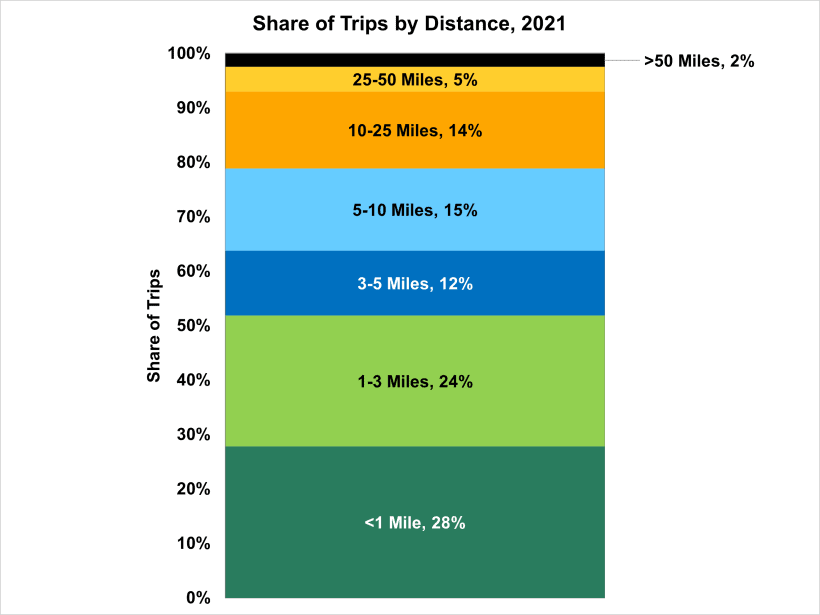
EV naysayers will say that drivers in the E.U. don’t drive as much as drivers in the U.S. But this is far from the truth. The U.S. Bureau of Transportation Statistics reported that most daily trips in the U.S. are less than 3 miles, and only 2% of daily trips are over 50 miles. Maybe we aren’t so different from drivers in Europe?
While the United States is about a year behind the global market, Americans are still buying EVs. A rumor abounds that electric vehicles are not selling, but this is far from the truth. With electrification in rural communities and ranges extending, EVs are definitely selling. They aren’t selling above market value, but only a few gas-powered vehicles are selling above sticker price, especially with high interest rates.
Cox Automotive is predicting that Americans will buy 1.5 million EVs in 2024, a number up from 2023. EV sales have grown substantially in the last few years, and now that the COVID supply-chain issues have stopped, EVs are more available and prices are dropping.
Strategies for Navigating the Political Landscape of EVs
The benefits of driving an EV are numerous, especially when it comes to maintenance and repairs. EVs don’t need oil changes. They don’t pollute from the tailpipe, and they are incredibly fun to drive. It’s easy to charge them at home. Plus, it’s becoming easier to find public charging stations on road trips. EVs are leading to innovations in battery technology, and they are proving to have a positive effect on the environment.
Promote EV Investment in Red States

Despite those benefits, fraught EV politics are keeping people from embracing the new, exciting technology. If stakeholders want to increase EV sales, the voices need to change. If Republicans only hear from Trump, they will continue to hate EVs. But, if they could hear from Republicans like Governor Kemp in Georgia, some of the hate might end. Georgia has more than 40 projects dedicated to electric vehicles, with more than $22.7 billion invested to create more than 28,000 jobs.
Even deep-red Tennessee is home to several EV projects. Volkswagen builds the ID.4 in Chattanooga, and Ford is building BlueOval City in Stanton, Tennessee. BlueOval City is expected to open in 2025 and will be Ford’s battery manufacturing campus and first carbon-neutral vehicle assembly facility.
ADVERTISEMENT
Get Republicans Into Full-Size EV Pickup Trucks
The political landscape could change after truck drivers get their choice of electric trucks. The Ford F-150 Lightning is the only full-size pickup truck available in today’s market, but this will soon change. Ram, Chevrolet, and GMC will soon release their powerful and capable trucks, and according to MotorBiscuit, Republicans are more likely to buy full-size pickup trucks.
The key to removing political bias from EVs could very well be in the full-size truck market. Once Republican truck drivers get behind the wheel of the Ram REV, the Chevy Silverado EV, or the GMC Sierra EV, they might never return to a gas-powered model. These gorgeous EVs have bright headlights, plenty of gadgets in the truck beds, and mind-blowing torque. While some truck drivers have complained about range dropping while towing, most truck owners never use their full-size trucks to tow. According to MotorBiscuit, only 35% of full-size truck drivers use their trucks to tow more than once annually.
In 2017, my husband purchased a brand new 2017 Ram 1500 Laramie with a Hemi V8. We never used it to tow. Our fill-ups were always over $70, and we put $4,000 into transmission repairs in 2022 when the truck had 90,000 miles on it. The truck was luxurious, spacious, and convenient, but we don’t miss the cost of owning it.
Those upcoming full-size EV pickups are arriving at the perfect time, as charging is becoming standardized with the J3400 ports and public charging stations are popping up in more convenient locations. The EV trucks from Ram, Chevy, Ford, and GMC look like the gas-powered siblings, but with more technology. They could be the game-changer that removes the political divide, but only if the automakers can get the right faces behind the wheel. Maybe Morgan Wallen? Jason Aldean? Arnold Schwarzenegger? Clint Eastwood? Tom Brady?
The key to bridging the divide could be in marketing, especially at the dealership. Sales teams need to believe in the benefits of the EV. When they do, their customers will, too. Education at the local level will also help. If people see that their neighbors enjoy their EVs, the naysayers might become curious and slowly change their tunes.
ADVERTISEMENT

FEATURE IMAGE: CHEVROLET, PAUL WEAVER
FTC: We use income-earning auto affiliate links. Learn more.




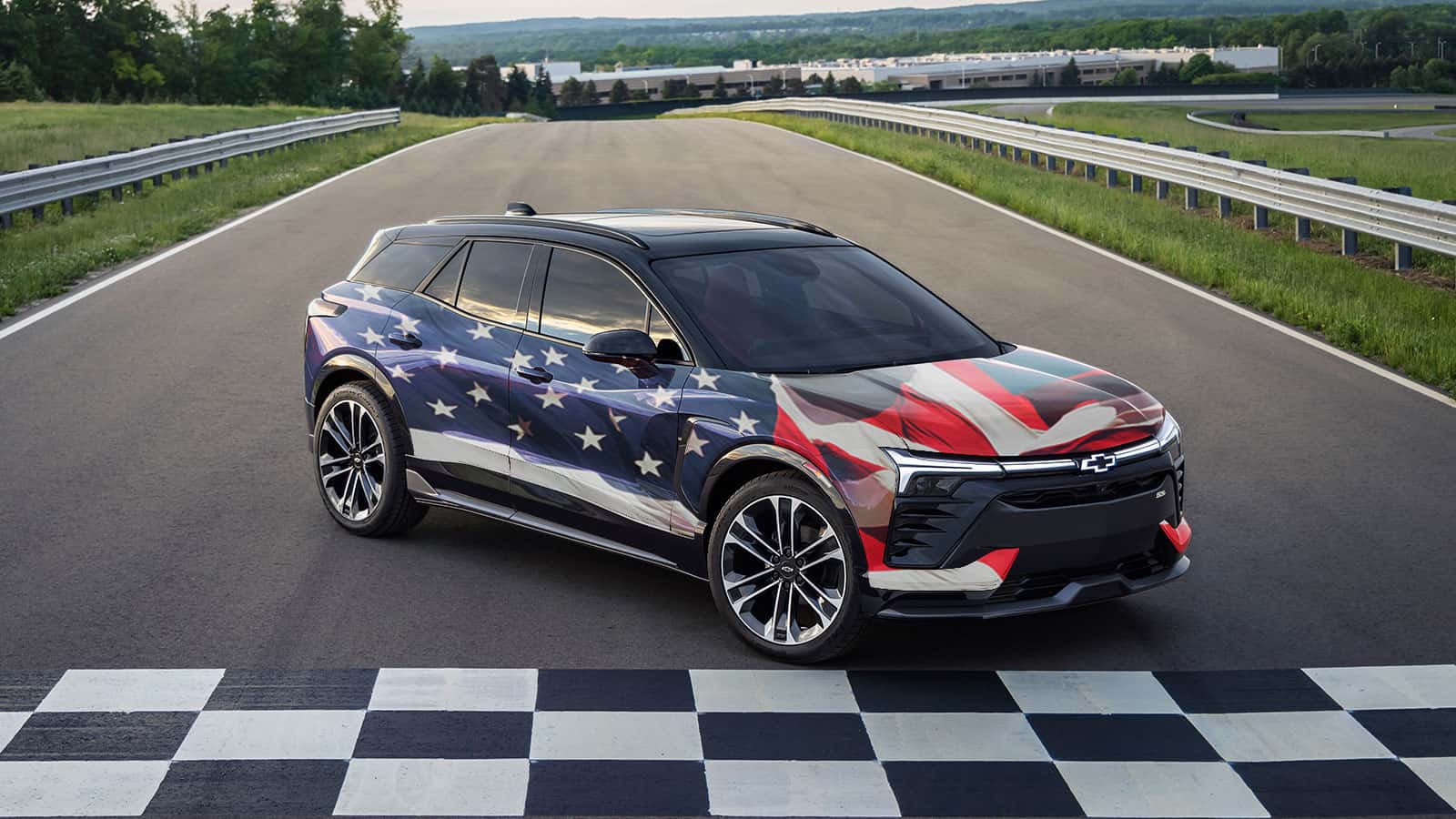
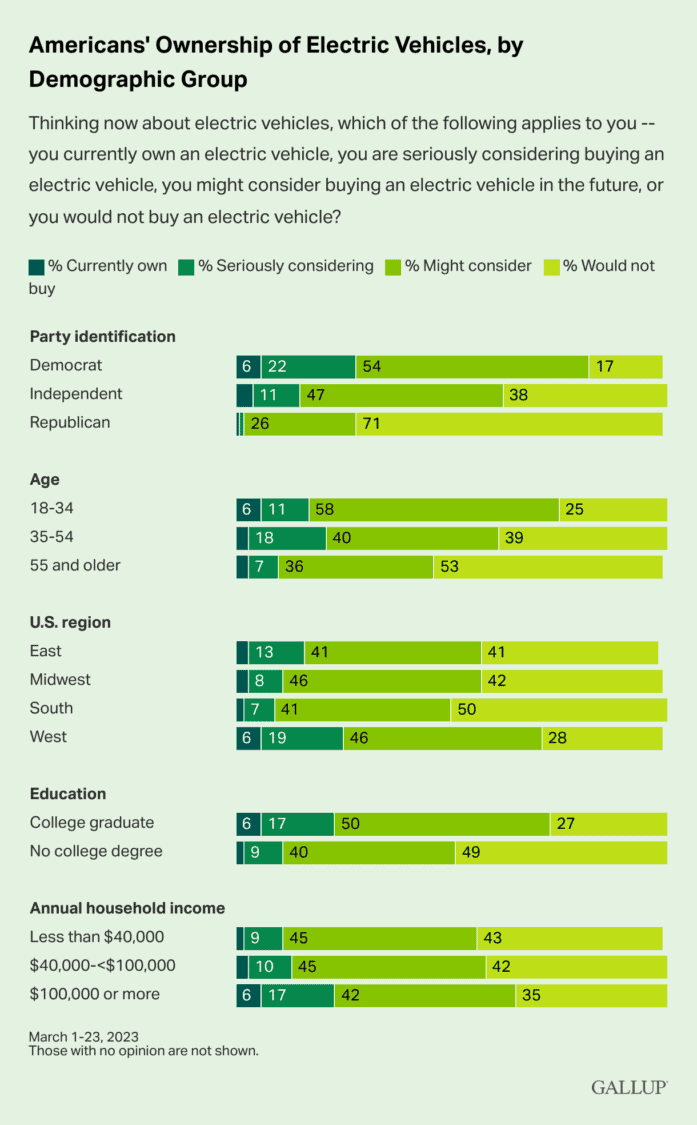


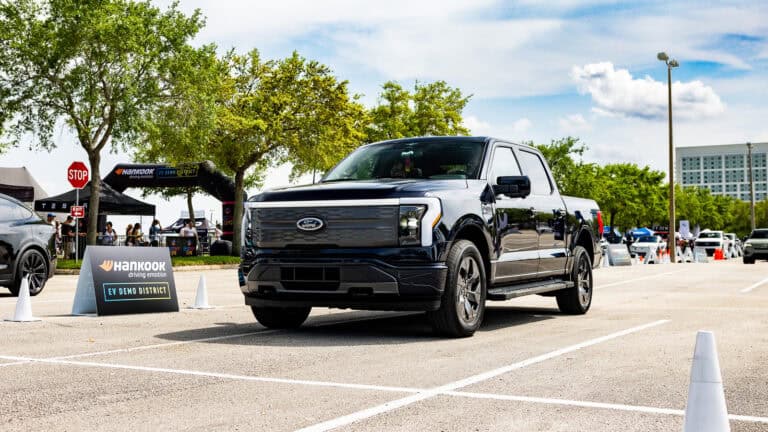
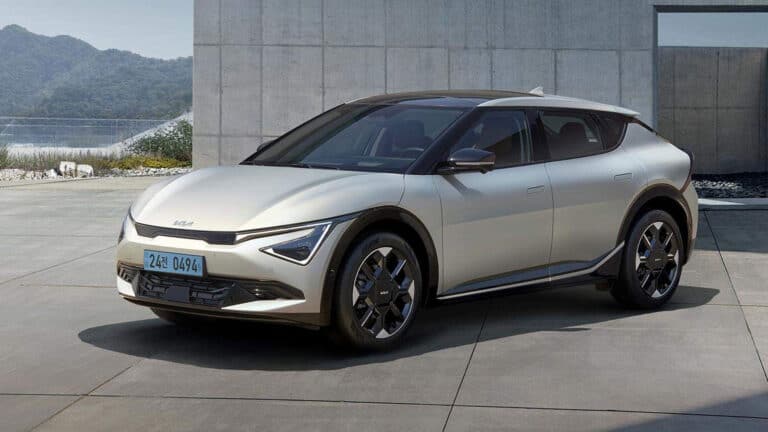
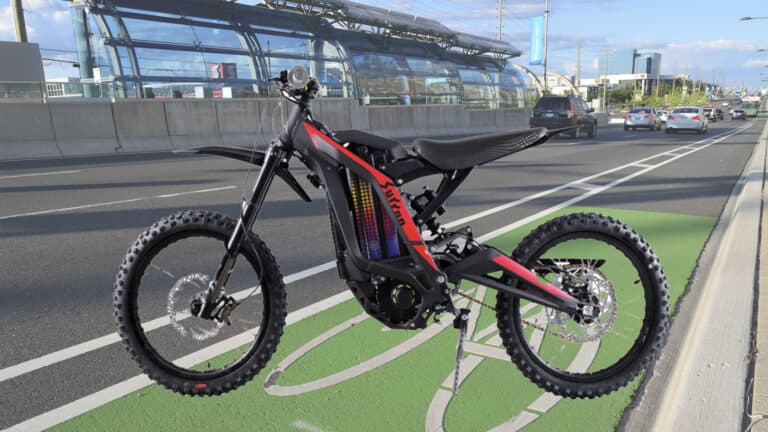














One Response